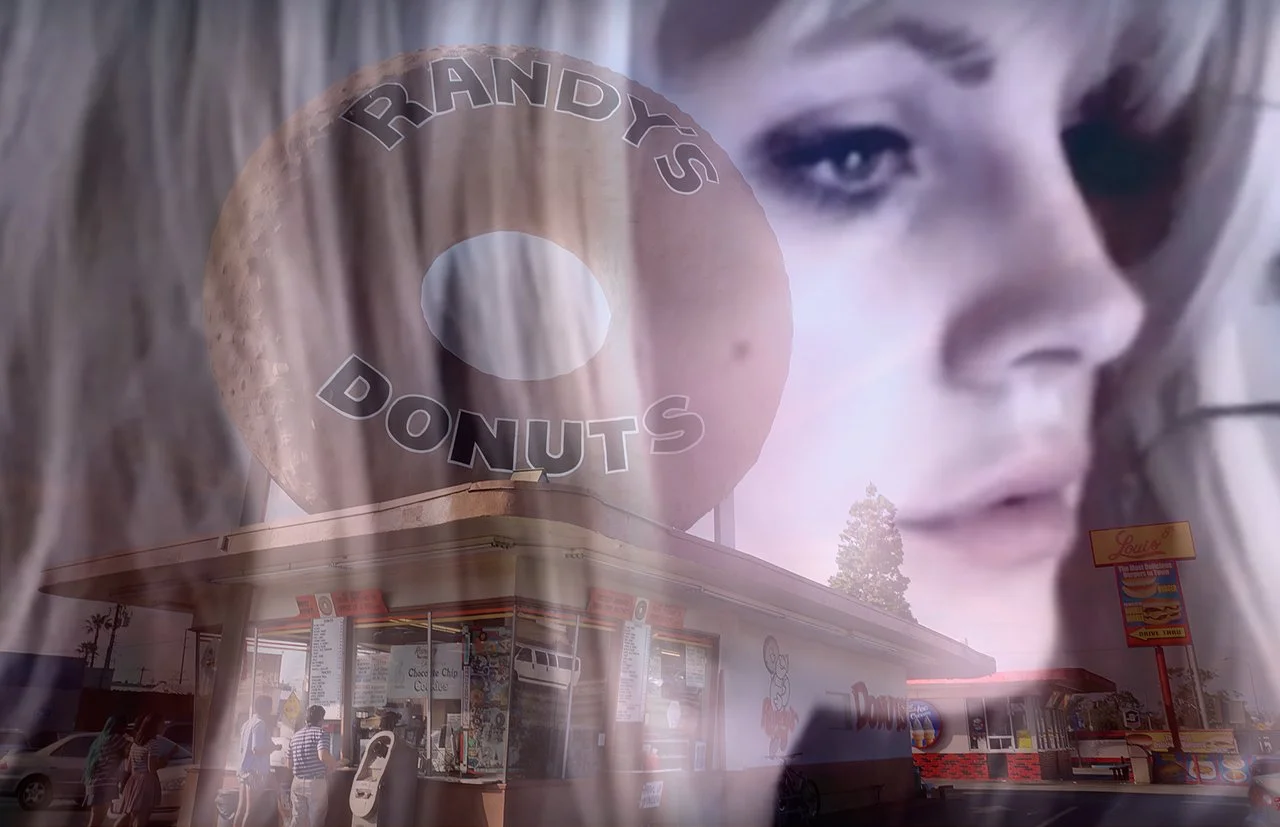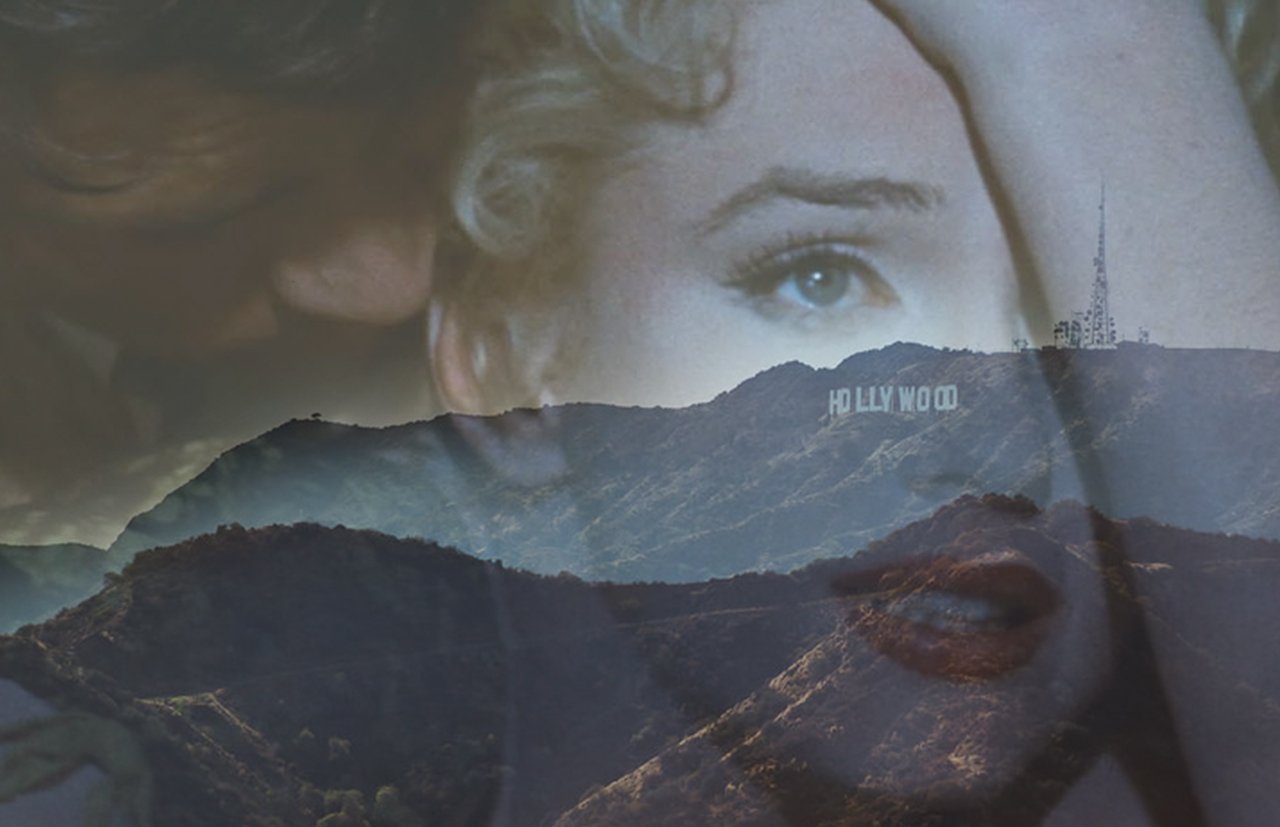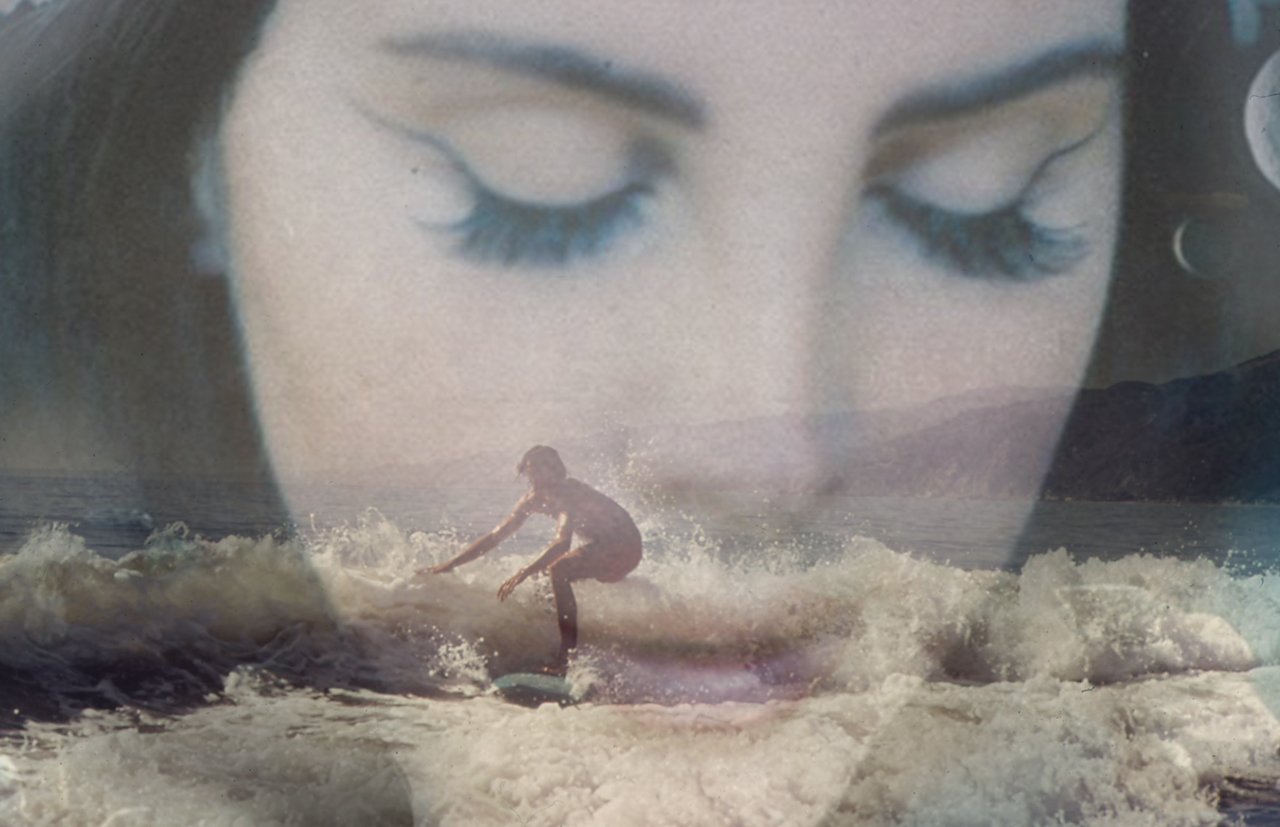Lana Del Rey is the musical enunciation of the sad girl on the internet. An artist who rose to fame after her DIY 2011 music video for Video Games went viral. In it we see her puffed lips pouting into a blurred webcam, singing in a grief-soaked voice of a boyfriend who is more interested in beer and Call of Duty than her, “It’s you, it’s you, it’s all for you.” In a way it’s obvious that the internet sees Lana as a sad girl, but once she’s deconstructed, it goes beyond emotion.
In Video Games, Lana announces that life is “only worth living if somebody is loving you.” Initially, Lana gained value only through her proximity to a man: she’s happy when he’s happy and sad when he’s sad. Lana’s male obsession is reminiscent of Sylvia Plath who wrote of the internal void which was filled only by her husband:
“I must get my soul back from you; I am killing my flesh without it.”
“I didn’t want any flowers, I only wanted to lie with my hands turned up and be utterly empty.”
“What did my arms do before they held you?”
Before Lana, and since Eve, a woman’s job has been to make a man feel comfortable. We are expected to think not of our own emotions, but those of the people around us. Think of the housewife pushing homemade pastries and finger foods into the greasy palms of their guests.
“Don’t worry, here’s a napkin,” she says while baring her pearly teeth like white gravestones. Men make jokes and women ask if you want another beer. By asking women to smile, men take control of our rights to our own feelings, coercing you into a puppet show performance of shiny girlhood.
Historically, women have pushed against the requirement to be permanently cheerful. Tragic queens have laid bare the trauma of womanhood; the corpuses of Virginia Woolf, Emily Dickinson, Anna Nicole Smith, Marilyn Monroe Persephone, Queen of the Underworld are littered with the tragic realizations that to be a woman is too often to be seen as nothing but an image, and one that is valued only as an appendage to a man.
During the 90s, the feminist tradition of the sad woman got lost. Drowned out by the Spice Girls’ message of “girl power” the feminist order became that which was celebrated within Facebook COO Sheryl Sandberg’s Lean In, a book which saw empowerment as synonymous with being a good worker.
Immerse yourself into the man’s world rather than breaking the man’s world to pieces. Hire babysitters, work overtime to show dedication, and pray to the holy trinity of red wine, vibrators, and skinny lattes upon the altar of board meetings and dating apps. Those women complaining about being left behind are losers and traitors of the gender.
Still, many women weren’t convinced by this new idea that equality was just one suit jacket away. Men still spoke over us, touched us and did better than us. On July 5th, 2012 the Twitter account So Sad Today posted her first tweet: “sad today.”
Ran by Melissa Broder, a poet suffering from depression, So Sad Today exhibited a uniquely feminized brand of despair. Short sentences, always in lowercase as though rapidly typed out and sent before the self-doubt creeps in; her tweets show a lethargic brokenness: “bucket list: go back to bed,” pain is hidden behind nonchalance: “if i have to watch my whole life flash before my eyes when i die i’m going to be so annoyed” or internet slang: “forgive and forget jk.”
She celebrates feminine tropes even while mocking them, referencing a taste for hair straighteners or Maybelline makeup: “maybe she’s born with it, maybe she’s comparing her insides to other people’s outsides.” It’s sadness with added eye-rolling. A teenager with crossed arms chewing Hubba Bubba too loudly. We read her words and can only think: “same.”
Three years later, Audrey Wollen, an Instagram artist from L.A set out her Sad Girl Theory which identified feminine misery as a site of resistance. She told Dazed, “Girls’ sadness is not passive, self-involved or shallow; it is a gesture of liberation, it is articulate and informed, it is a way of reclaiming agency over our bodies, identities, and lives.”
In one selfie she sits on public bathroom sinks clutching a wet tissue. In the background the hollow doors bash against plastic, it looks like the smell of stale urine. Mortal_Fiber commented, “A. Let’s be grateful for waterproof eyeliner.”
Later that year more pixelated tears graced the internet. Dora Moutot, a Paris-based artist, uploaded videos of strangers crying on Tumblr for her project Webcam Tears. Moutot shows girls sobbing in magnolia painted rental apartments with smoke stains and blue tacked posters. One girl heaves out raspy breaths as Blink 182 plays from her laptop, another screams ‘you fucking’ and then finds herself unable to finish the sentence, her jaw jutting out in a grimace. Webcam Tears feels intrusive to watch, as though you’ve poked around their insides and taken a selfie in there.
“Emotions are more shocking than a dick and a pussy today,” Dara explained to Dazed. “Society teaches us that we should hide while crying and that it should not be a public act.”
Much of Lana’s sadness lies in her beauty. She might possess the glamour of a movie star draped in mink fur tying a cherry stalk in a knot with her tongue, but she doesn’t make femininity look easy. In her early days, Lana was knowingly costumed. Like Jackie Kennedy, Lana styled her hair in a bouffant, wrapped in slippery silk gowns and pale blue stiff shift dresses cinched in at the waist. Other times she looked more like a housewife addicted to Adderall, wearing fuzzy peach jumpers and pearls. Or she was a schoolgirl slobbering over a fluffy pink pen, her neon pink bra falling out in what she called her “Gangster Nancy Sinatra” look.
She screams of the sort of girl who calls men ‘honey’ and hasn’t had a good nights sleep in years. Everything looks a little too perfect and a little too labored. With her main accessory a vacant smile, Lana was an illustration of the attainment of the idealized American woman but also of the personal devastation such attainment would cause.
There’s something purposefully uncanny about Lana’s image. It’s as though if you peeled back her exterior underneath you would find gangrenous green sludge. She recalls the fatalistic glamour of Playboy model Anna Nicole Smith, who after a life in Texas serving up Jim’s Krispy Fried Chicken, married 89-year-old billionaire Howard Marshall, became addicted to prescription drugs and tragically killed herself. Her vanishing and expanding waistline laid bare the impossibility of dieting.
Nicole Smith was a woman so dolled up in fake lashes and bleach blonde hair she was effectively performing woman-woman drag. Making statements as wan and blue as her oceanic eyeshadow, Smith would tell the cameramen of The Anna Nicole Show, “You know those bumper stickers where it says ‘Shit Happens, And Then You Die?’ They should have them where ‘Shit Happens, And Then You Live’ because that’s really the truth of it.”
After Born to Die, Lana’s sadness moves from ornate to apathetic. On her third album Ultraviolence, the tempo is languid, like a prolonged yawn. “They judge me like a picture book, by the colors they forgot to read,” she coos on Brooklyn Baby in a throaty sexy baby voice. In Shades of Cool, her high pitched tremors are so fragile they’re eventually drowned out by reverbing guitars, “’Cause you live in shades of cool/ Your heart is unbreakable.” Morbidity and pain seethe through every croaked note.
Lana is a pop outlier. She emerged in a musical climate where empowerment was the predominant mode. In 2013, Katy Perry’s Roar reached number one, it’s lyrics nearing a military command to stand to attention and enjoy yourself. The soaring chorus building to a machined crescendo, even if you hate the sound of it, chances are you’ll be left writhing in goosebumps. If Katy is movement, Lana is a sloth; her music so droning that one’s response nears that of nausea.
Everything in Lana’s universe is blue — the color of sadness. There’s the blue of her lover’s Levis jeans, the Blues music she sits in a hatchback and gets high to, the washed-out blue of the careless sky above her, the iced out blue of her mood.
On the opening track of her 2015 album Honeymoon, she simply exhales: “Dah-ah-ah-ah-ark bluuuuuuuuue” and on The Blackest Day she sings, “Got my blue nail polish on/It’s my favorite color and my favorite tone of song.” Her words are so solemn she must have a permanent Seasonal Affective Disorder (SAD).
The girls in Lana’s universe don’t go anywhere, they are trapped in the grainy past of cassette tapes and first dates. They get dumped by a biker in a leather vest and drink until vodka dribbles out their nostrils. They make a lemon meringue pie, but then get too distracted to eat it. They read Walt Whitman and scribble the quotes onto their arm before having got through the first chapter. Her world of battered Americana, of Diet Mountain Dew, turquoise swimming pools and gingham two-pieces is a claustrophobic future where the floor is sticky and the walls are closing in.
What Lana acknowledges is that being a woman is emotionally taxing. It doesn’t always make you feel like a “girl boss.” It’s a guy scraping past you on the way to the club toilet and saying ‘excuse me’ while clutching your hip, it’s picking your boyfriend’s sweaty socks up cause you’re bored of asking him to move them himself. There’s value in how difficult Lana makes being a woman look. She’s where you go when you’re too tired for feminism, when you don’t want to march or sign online petitions, and when you just want to sink into a bath and run the taps until water overflows the tub.
Lana’s pain has always been personal. But in 2017 something happened to Lana’s sadness. The bleakness remained, but it became less insular and turned towards the outside world. She spoke openly about hexing Donald Trump, tweeting “ingredients can b found online.” Given his comments on grabbing women’s pussy, Lana’s Lust For Life track God Bless America – And All the Beautiful Women In It appears as a direct affront, as does When the World War Was at War We Just Kept Dancing where she wonders, “Is this the end of an era / Is this the end of America?”
She appears on the cover of her new album Norman Fucking Rockwell (to be released early next year) makeup free. Granted her face still glows in the manner of someone who religiously follows a 10-step skincare regime, but her skin is missing the excessive powdery pink blush. Her 50s style flat iron waves are replaced by a simple bob. I’ve never seen someone look more strange in a t-shirt.
On her new release Mariners Apartment Complex, a 70s rock ballad with tender strings, she tells us she is not who we think she is — she’s tougher: “You took my sadness out of context/ At the Mariners Apartment Complex/ I ain’t no candle in the wind” before singing, “You’re lost at sea, then I’ll command your boat to me again.” Throughout the song, she whispers to herself in a breathy purr, “I’m your man.” Her voice sounds fuller and more self-assured than ever, as though she’s dressed a white lace veil, announcing wedding vows to herself. Lana doesn’t need a boy to lean on anymore, she’s her own lover.
On Venice Bitch, another Norman release, Lana might call herself “ice cream, ice queen” but she paints an image of herself as infinitely less cold: “Fresh out of fucks, forever/ Tryin’ to be stronger for you.” As the song bleeds out into hazy synth guitars and soft harmonies, we see Lana’s VCR recording dissolve into prolonged shots of vintage cars wiggling down motorways. Where they are heading is unclear — perhaps they are looping back around into Lana’s claustrophobic world of Parliament cigarettes and brown lip liner, or maybe they’re driving somewhere new, somewhere where women actually have something to smile about.




